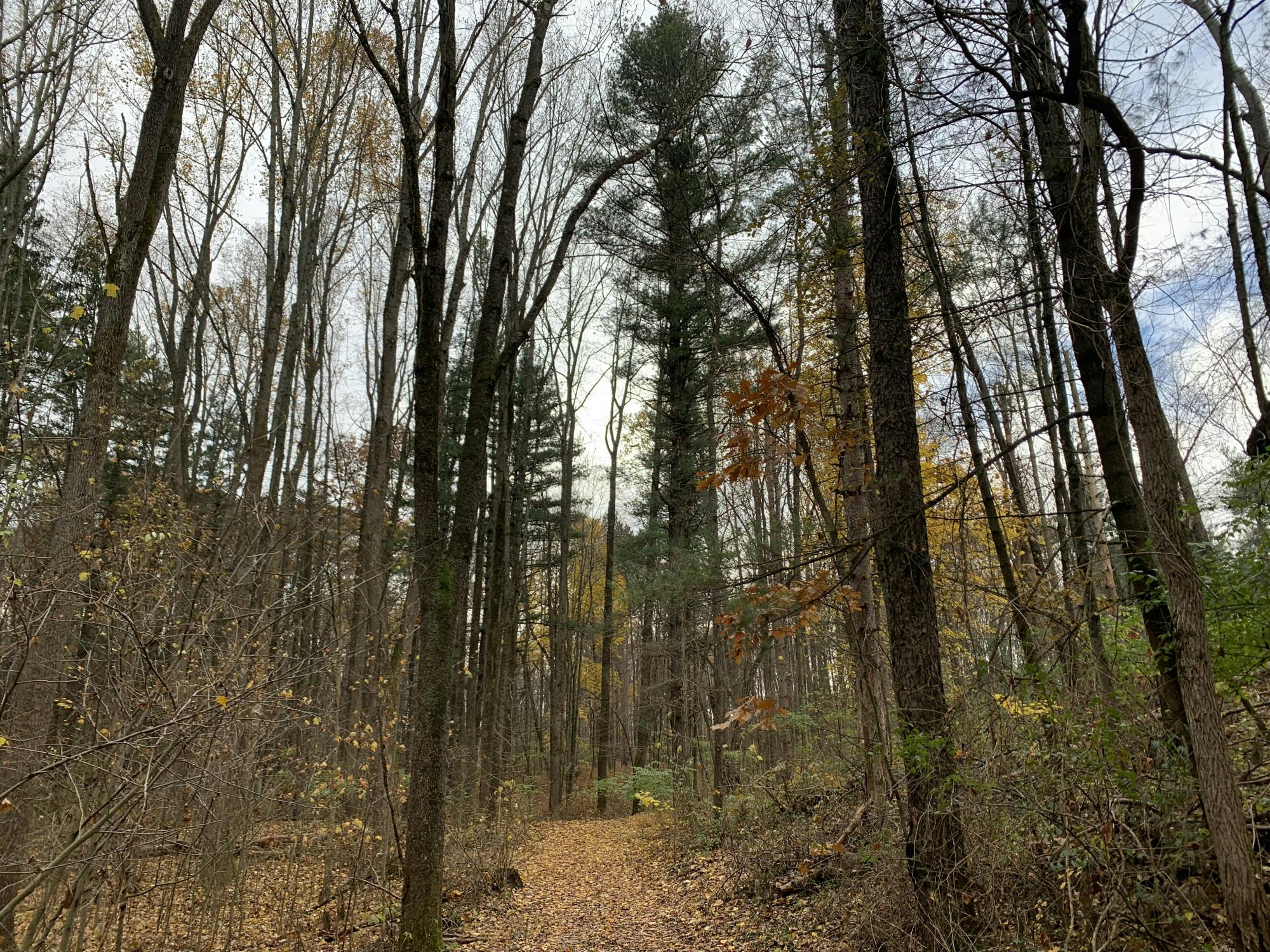MSU’s Kyla Dahlin is using forests and low-energy lasers to work towards more accurate climate modeling.
Dahlin, an assistant professor in the Department of Geography, Environment and Spatial Sciences, is currently working on a research project that aims to understand how different types of plants absorb different amounts of carbon dioxide, the primary greenhouse gas emitted through human activities.
Plants remove carbon from the atmosphere during photosynthesis, but the amount of carbon varies between types.
“Typically, when people try to estimate how much carbon a forest is taking up ... they do it by assuming that all broadleaf, deciduous temperate trees are going to behave in more or less the same way,” Dahlin said. “That works pretty well, but it doesn't work great.”
For example, not much distinction may be made between the amount of carbon absorbed by a chestnut tree and an elm tree, or between a pine tree and a spruce tree. This difference could result from a variety of factors, such as one type of deciduous tree photosynthesizing longer than another. Because of this, biodiversity is an important factor in understanding how much carbon forests can take up.
Dahlin’s research relies on a tool called remote sensing, a method of viewing the surface of the Earth from an airplane or satellite and using that information to understand different patterns of plants. Dahlin said that this tool is used to understand forest structure and plant leaf chemistry.
To determine forest structure, a form of remote sensing device called LiDar is used. LiDar, which stands for light detection and ranging, shoots low-energy lasers out of an airplane and measures the return time of the pulse.
Scott Stark, an assistant professor in the Department of Forestry at MSU, has also worked with LiDar.
“You're basically spraying the canopy with a sort of swath of laser pulses,” Stark said.
He said that the beams are able to penetrate into the canopy, giving information about the forest including the height of trees and the composition of the forest’s understory, which is the layer of vegetation between the canopy and the ground.
“We can even convert it into a three-dimensional map,” Stark said.
This information helps Dahlin understand how diverse or not diverse a patch of forest might be.
Plant chemistry is determined by a device called a hyperspectral sensor. Dahlin said that the device works a lot like a camera, except it captures infrared light in addition to visible light.
“It turns out that plants actually reflect light really differently in the infrared than they do in the visible, and so that information tells us a lot about leaf chemistry, as well as other important things about leaf traits,” she said.
When airplanes cannot be used in larger areas, satellites can. Additionally, satellites offer the advantage of being able to look years into the past to better understand the present-day makeup of a forest.
“We have this satellite data going back over 40 years, and so the idea is to use that 40-year history to try to see if that history ... explains some of the differences we see in the forest today in terms of their structure and their leaf chemistry,” Dahlin said.
Dahlin recently received The National Science Foundation’s Faculty Early Career Development Program award, an award intended to support “early-career faculty who have the potential to serve as academic role models in research and education.”
Dahlin plans to use the award to start a summer school aimed at graduate and post-doctoral researchers with the goal of getting more ecologists interested in using remote sensing tools. This project is planned to begin in 2023.
Support student media!
Please consider donating to The State News and help fund the future of journalism.
Discussion
Share and discuss “Forests and lasers: How an MSU researcher seeks to better understand carbon absorption ” on social media.







